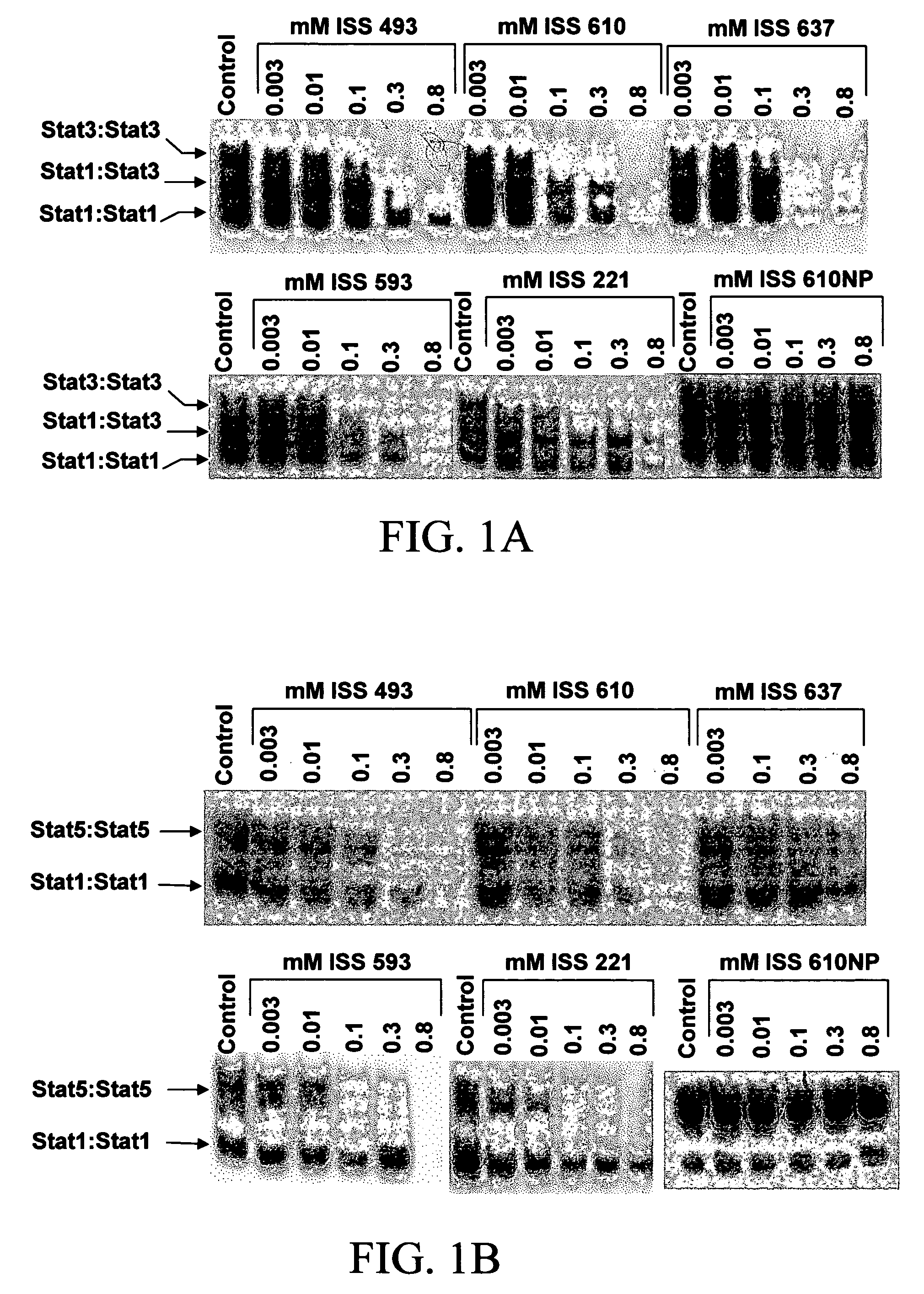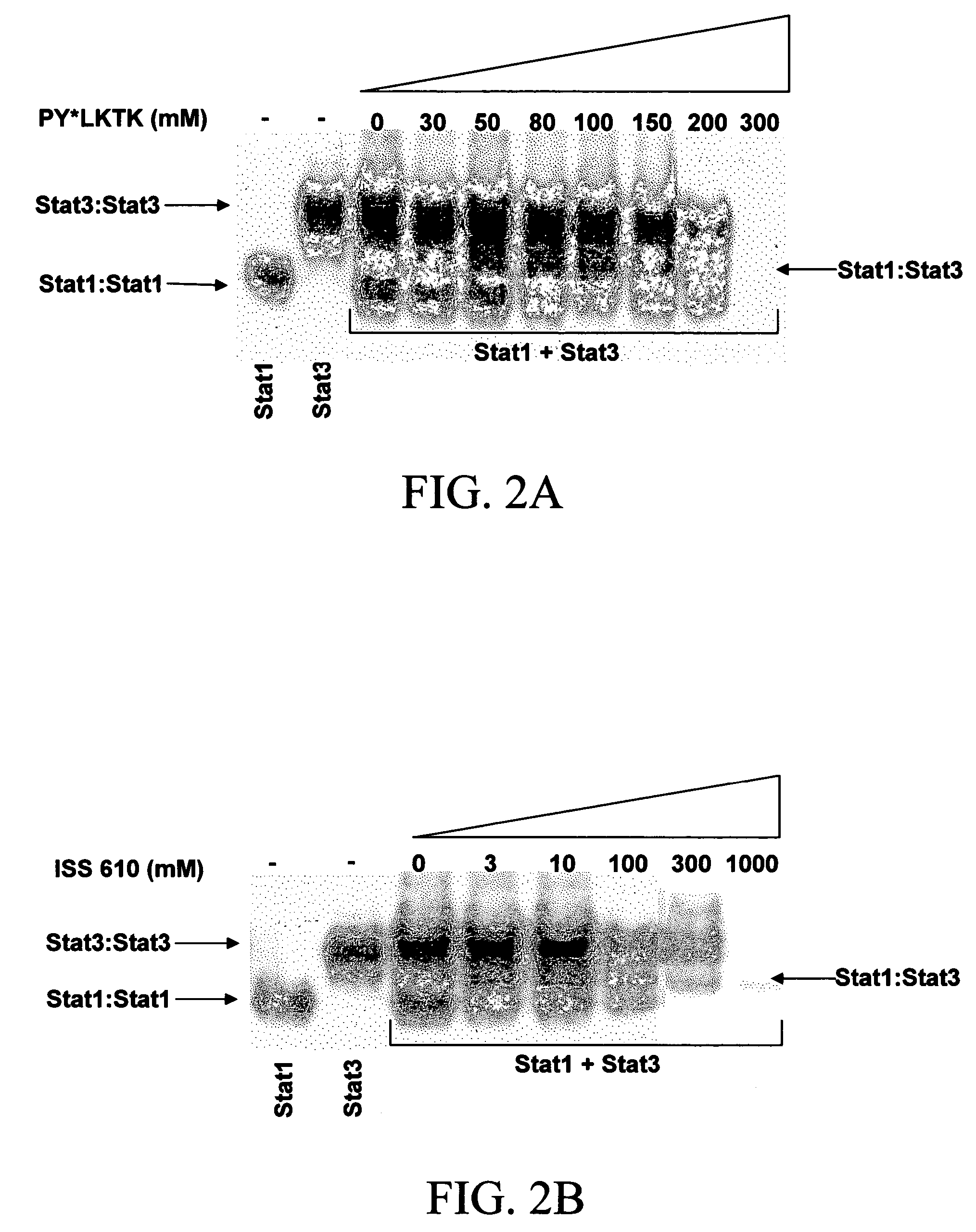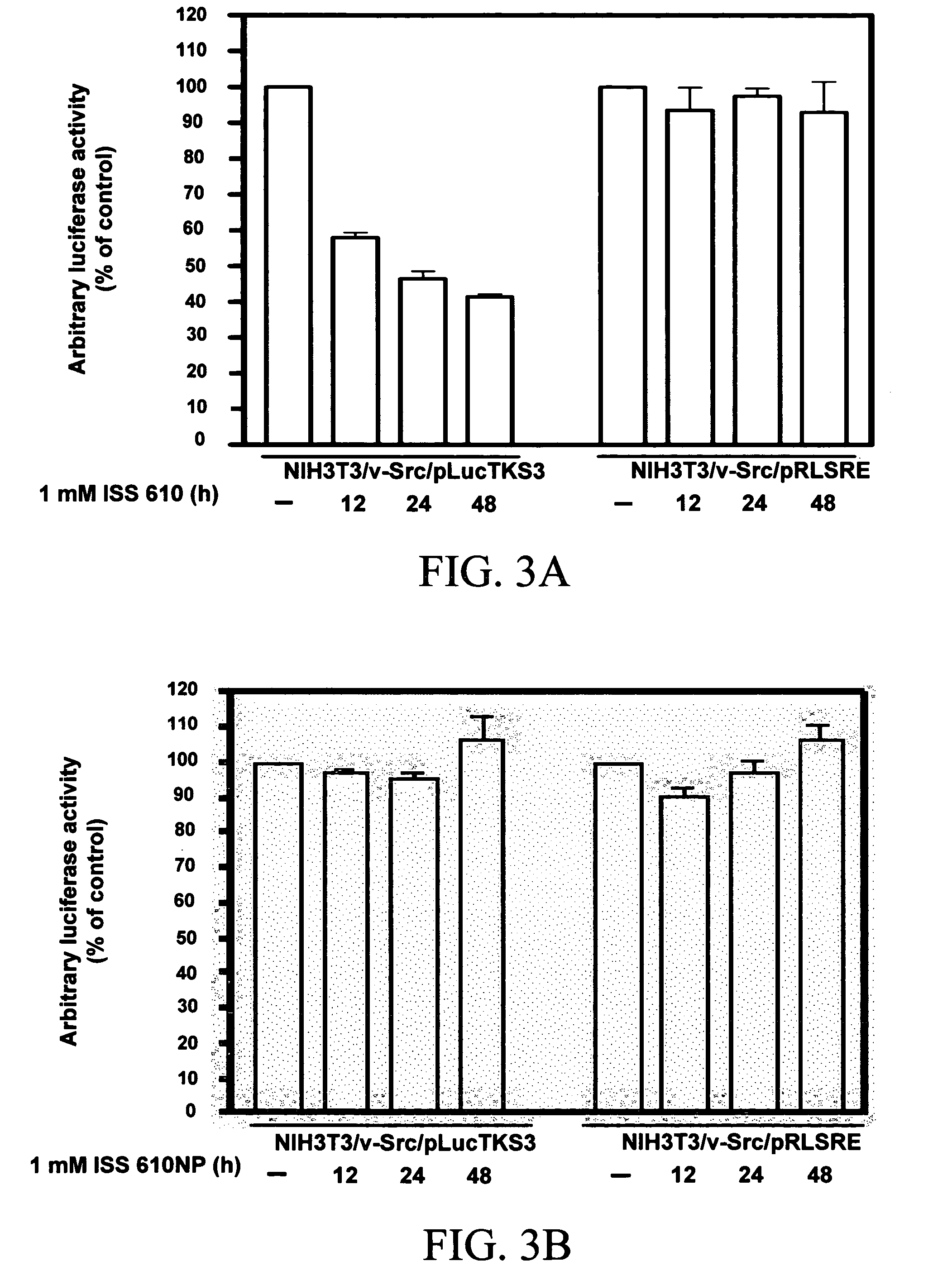Peptidomimetic inhibitors of STAT activity and uses thereof
- Summary
- Abstract
- Description
- Claims
- Application Information
AI Technical Summary
Benefits of technology
Problems solved by technology
Method used
Image
Examples
example 1
Design of PY*L Peptidomimetics: Substitutions of Proline with Aromatic Groups Generate Strong Disruptors of Stat3 DNA-Binding Activity in Vitro
[0062]It has been reported that PY*LKTK (SEQ ID NO. 5), the putative Stat3 SH2 domain-binding sequence, and the tripeptides PY*L and AY*L, disrupt Stat3:Stat3 dimer formation and subsequent Stat3 DNA-binding activity. Peptidomimetics of the invention can be prepared by replacing prolyl or alanyl residue at the peptide bond that is N-terminal to the phosphotyrosine. (Y*) of a peptide such as PY*L or AY*L with an organic substituent such as an optionally substituted aryl or heteroaryl group. The activities of STATs were measured in nuclear extracts (prepared from epidermal growth factor (EGF)-stimulated fibroblasts) as DNA-bound protein complexes by electrophoretic mobility shift assay (EMSA). STAT-DNA complexes detected include Stat3:Stat3 homodimers (upper band), Stat1:Stat3 heterodimers (intermediate band) and Stat1:Stat1 homodimers (lower b...
example 2
Disruption of STAT Dimerization: Evidence for Dissociation of STAT Dimers
[0065]A STAT dimerization disruption model (Turkson, J. et al. (2001)) has been proposed to define the interaction of Stat3:Stat3 dimers with PY*LKTK (SEQ ID NO. 5), PY*L, and AY*L. In this model, phosphopeptides engage in pTyr-SH2 interactions with STAT:STAT dimers, which results in STAT dimer dissociation into monomers (in complexes with phosphopeptides), some of which may in turn reassociate into STAT dimers. Using this model, dissociation-reassociation analysis (Shuai, K. et al. (1994)) was performed with two independent cell lysate preparations, one containing only active Stat1:Stat1 dimers and the other only Stat3:Stat3 dimers. Lysates were mixed together with or without PY*LKTK (SEQ ID NO. 5) or peptidomimetic ISS 610 or its non-phosphorylated counterpart, ISS 610NP, and then incubated with radiolabeled hSIE probe (SEQ ID NO. 3) and subjected to EMSA analysis.
[0066]Either cell lysate preparation alone sh...
example 3
Peptidomimetic Selectively Blocks Stat3 Signaling and Constitutively-Active Stat3-Dependent v-Src Transformation
[0067]PY*LKTK-MTS (SEQ ID NO. 1) (MTS, membrane translocation sequence, is a sequence of hydrophobic amino acids that facilitates transport of peptides across cell membranes) (Rojas, M. et al. (1998)) inhibits constitutive Stat3 activation in Src-transformed fibroblasts (Turkson J. et al. (2001)). Peptidomimetics which are phosphorylated on tyrosine have reduced membrane-permeability, particularly if they do not contain MTS to enhance permeability. Thus, peptidomimetic ISS 610 was used at 1 mM concentrations in whole-cell studies. Luciferase reporter assays on Src-transformed mouse-cells that stably express Stat3-dependent and Stat3-independent dual luciferase reporters (Turkson J. et al. (2001)), and are treated with ISS 610 show a significant suppression of transcriptional induction of the Stat3-dependent luciferase reporter, pLucTKS3, with no effect on the induction of ...
PUM
 Login to View More
Login to View More Abstract
Description
Claims
Application Information
 Login to View More
Login to View More - R&D
- Intellectual Property
- Life Sciences
- Materials
- Tech Scout
- Unparalleled Data Quality
- Higher Quality Content
- 60% Fewer Hallucinations
Browse by: Latest US Patents, China's latest patents, Technical Efficacy Thesaurus, Application Domain, Technology Topic, Popular Technical Reports.
© 2025 PatSnap. All rights reserved.Legal|Privacy policy|Modern Slavery Act Transparency Statement|Sitemap|About US| Contact US: help@patsnap.com



